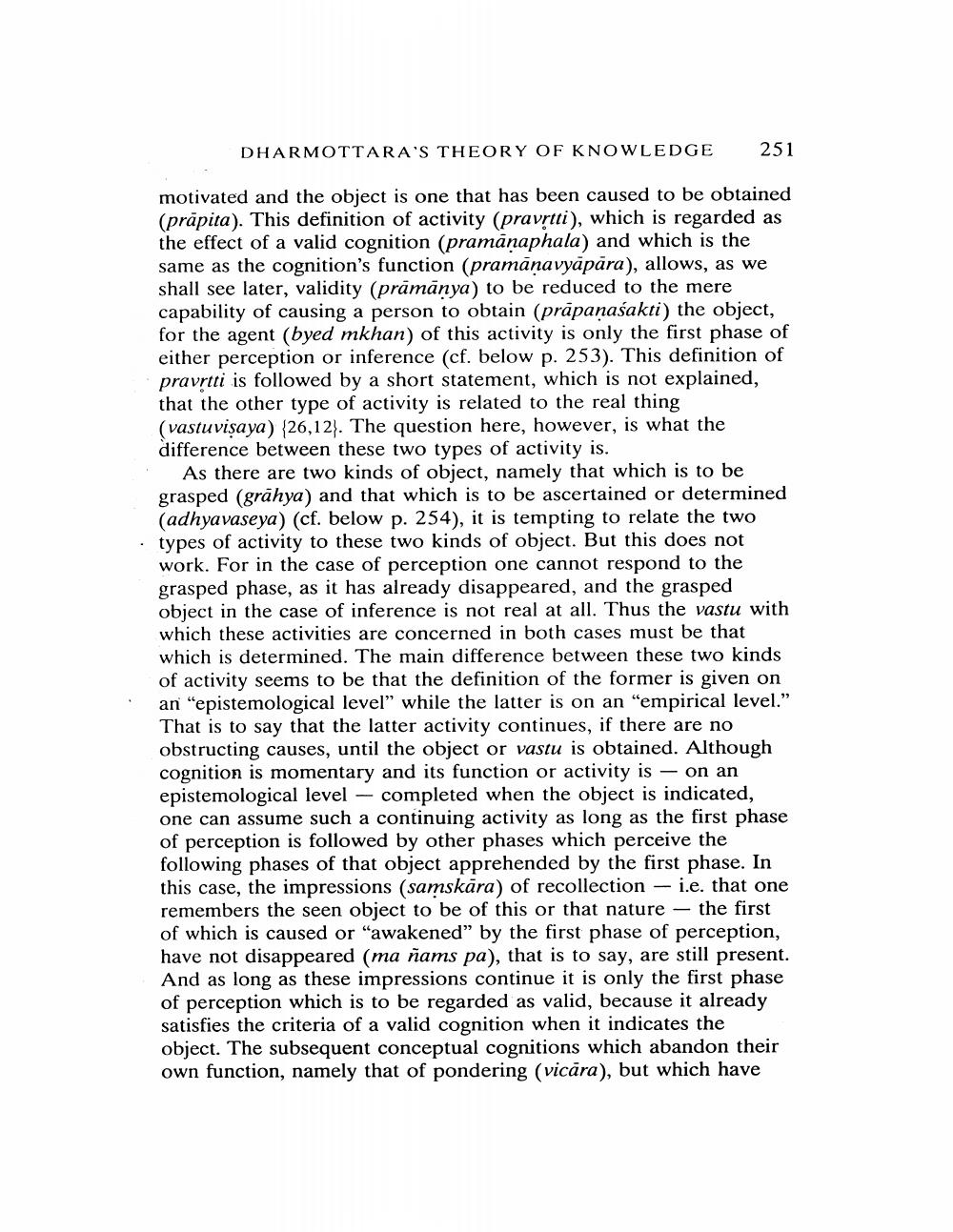Book Title: Dharmottaras Theory Of Knowledge In His Laghupramanyapariksa Author(s): Helmut Krasser Publisher: Helmut Krasser View full book textPage 5
________________ DHARMOTTARA'S THEORY OF KNOWLEDGE 251 motivated and the object is one that has been caused to be obtained (prăpita). This definition of activity (pravrtti), which is regarded as the effect of a valid cognition (pramānaphala) and which is the same as the cognition's function (pramānavyāpāra), allows, as we shall see later, validity (prāmānya) to be reduced to the mere capability of causing a person to obtain (prāpaņaśakti) the object, for the agent (byed mkhan) of this activity is only the first phase of either perception or inference (cf. below p. 253). This definition of pravrtti is followed by a short statement, which is not explained, that the other type of activity is related to the real thing (vastuvisaya) (26,12). The question here, however, is what the difference between these two types of activity is. As there are two kinds of object, namely that which is to be grasped (grähya) and that which is to be ascertained or determined (adhyavaseya) (cf. below p. 254), it is tempting to relate the two types of activity to these two kinds of object. But this does not work. For in the case of perception one cannot respond to the grasped phase, as it has already disappeared, and the grasped object in the case of inference is not real at all. Thus the vastu with which these activities are concerned in both cases must be that which is determined. The main difference between these two kinds of activity seems to be that the definition of the former is given on an "epistemological level” while the latter is on an "empirical level.” That is to say that the latter activity continues, if there are no obstructing causes, until the object or vastu is obtained. Although cognition is momentary and its function or activity is – on an epistemological level - completed when the object is indicated, one can assume such a continuing activity as long as the first phase of perception is followed by other phases which perceive the following phases of that object apprehended by the first phase. In this case, the impressions (samskāra) of recollection – i.e. that one remembers the seen object to be of this or that nature – the first of which is caused or "awakened” by the first phase of perception, have not disappeared (ma ñams pa), that is to say, are still present. And as long as these impressions continue it is only the first phase of perception which is to be regarded as valid, because it already satisfies the criteria of a valid cognition when it indicates the object. The subsequent conceptual cognitions which abandon their own function, namely that of pondering (vicāra), but which havePage Navigation
1 ... 3 4 5 6 7 8 9 10 11 12 13 14 15 16 17 18 19 20 21 22 23 24 25
